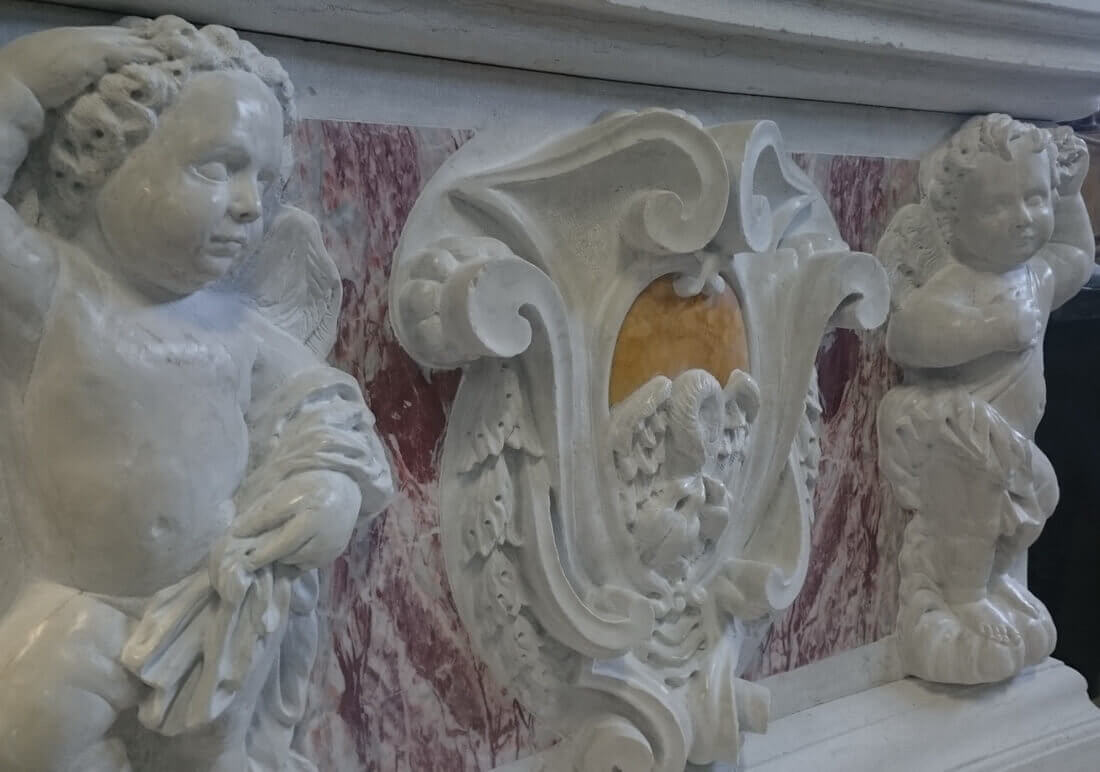
Istria stone: a stone already used by the ancient Romans
Istria stone is a sedimentary cliff limestone coming from the homonymous peninsula in the Adriatic Sea which borders the Italian geographical region to the east. It is also known as Orsera stone. As it is compact and not very porous, it prevents the rise of moisture and is very resistant to salt corrosion. Like most limestone rocks, it is sensitive to chemical aggression in particular to the sulphur dioxide contained in the polluted air and the consequent acid rain which causes the deterioration of the surface.
Cover photo: Altar high-relief made in Istria stone with inlays – Arte 2000 work
A unique stone exported overseas
The Istrian stone has been quarried for over two thousand years and was well known since Roman times.
The oldest monument are:
- the Pula Arena in Croatia built in Istria stone in the first century A.D.;
- the Arch of Augustus, entrance door to the city of Rimini in Italy, built in 27 B.C. and covered with Istria stone, now partly lost
In 1669 mining and distributive activities reached almost industrial levels and after a period of regression, regained their strength. Venetian researchers and officials, witnesses of Istrian times and places, have especially mentioned the quarries of Brijuni, Rovinj and Orsera. The Istrian region has not become famous for the sculptural art but for the great quantity of stone available and the consequent intense export occurred during the Middle Ages and modern times to the great overseas metropolis, in particular in Venice. It was in fact one of the most used stones in Venice in order to build beautiful monuments and wonderful palaces able to withstand the continuous contact with the water of the sea. Most of the production is still exported to Italy.
Quarry area
Croatia, in the Istrian region: in particular in Orsera, Rovinj, Poreč and Pula; recently also in Kanfanar, Pinguente and Pisin
Availability
limited. The quarries are running out and it becomes increasingly difficult to find material of first choice.
Colour
Freshly extracted, it has a colouration ranging from ivory to pearl grey with slight shades of dark beige, pale pink or light green. With exposure to atmospheric agents it assumes a uniform pale grey colour. Over the years, it becomes white due to the superficial redeposition of calcite, dissolved by water action and the recent sulphation phenomena.

Istria stone detail
Use
It is appropriate for ornamental works for classic and rustic ambiences, both indoor and outdoor: fountains, fireplaces, floors, stairs, coverings, columns, balustrades, portals, frames, sculptures. It is suitable for any type of finishings; it lends itself very well to our special antique finishing with “time-worn” effect.
Our works
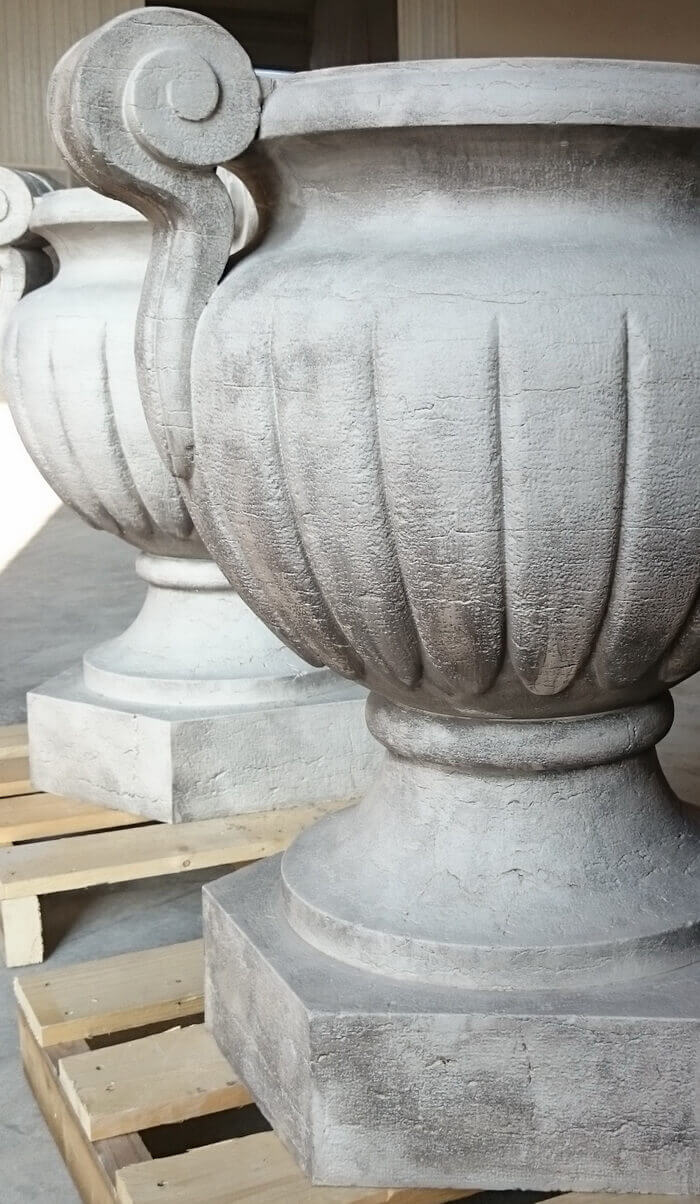
Carved vase in Istria stone with antique finish – Arte 2000 work
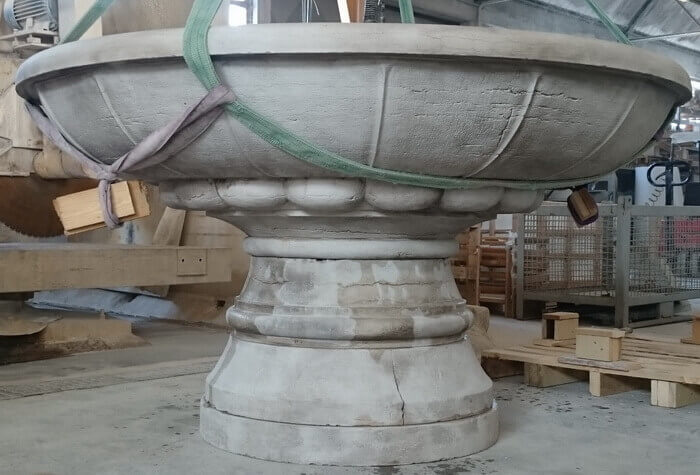
Carved basin for the fountain in Istria stone – Arte 2000 work

Dolphin sculpture in Istria stone – Arte 2000 work
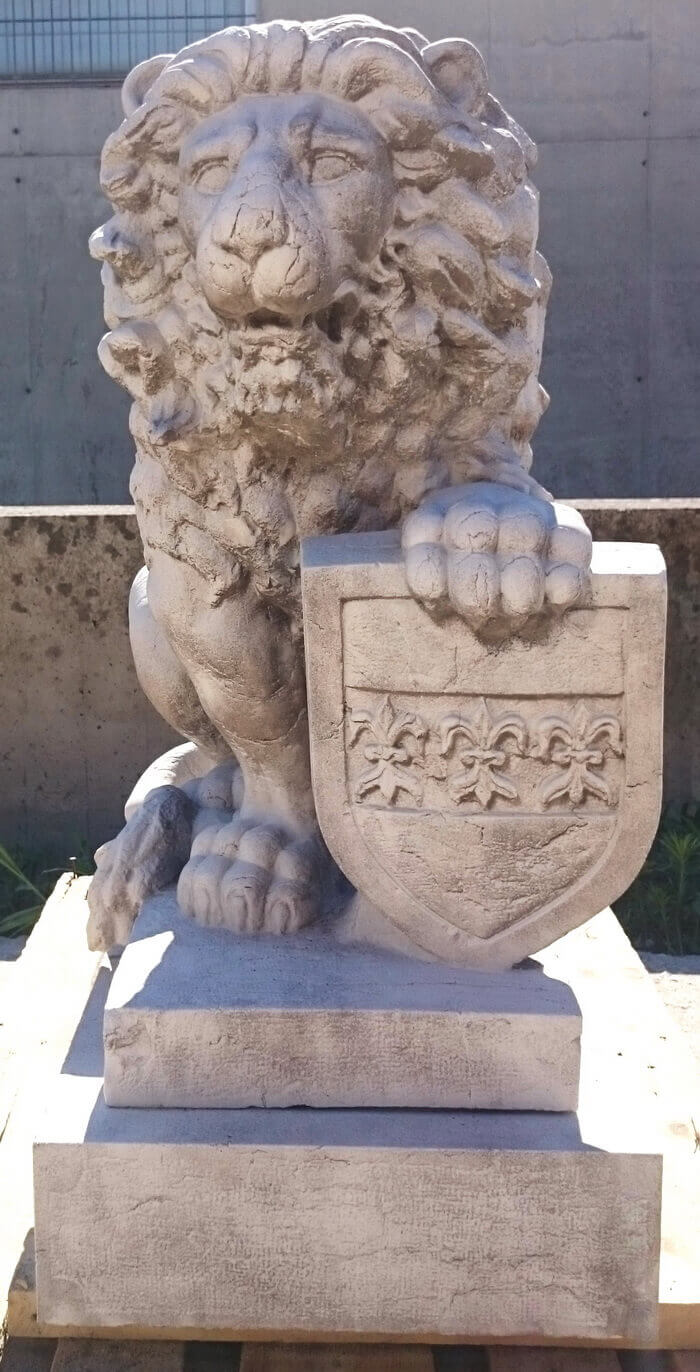
Lion sculpture in Istria stone with antique finish – Arte 2000 work
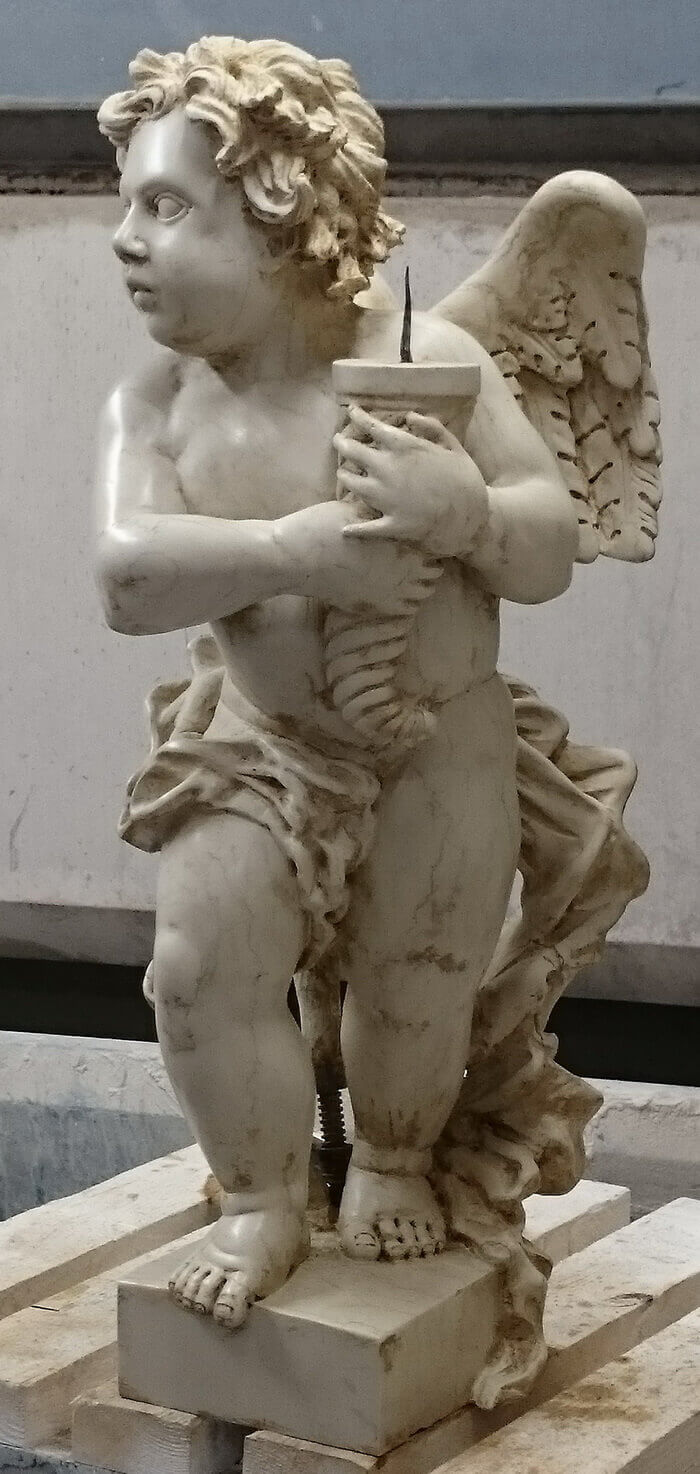
Angel sculpture in Istria stone with antique finish – Arte 2000 work
Giallo d’Istria marble
Istrian stones are always classified according to their solidity and appearance.
Giallo d’Istria marble is a limestone from the Istrian peninsula. It has a background colour varying between yellow, beige and hazel with the characteristic presence of dark spots, more or less homogeneous. Depending on the type of stains and the background tone, it is classified in courses“” (I, II, III, IV,V) with different availability and costs. It is widely used in indoor and outdoor construction. It is healthy and resistant to low temperatures but less than Istria stone. Istria Stone and Giallo d’Istria marble are therefore two different materials with various qualities and should not be confused.
School of international sculpture in the Montraker-Orsera ex quarry
Every year at the end of summer, the abandoned Montraker quarry in Orsera comes to life with an open-air sculpture summer course. The school, founded in 1991 and became international in 1993, is attended by undergraduates of the Croatian and foreign Fine Arts academies. Under the guidance of master sculptors, the students learn about the stone, the techniques of working and inspired by the magic of a place rich in history, create fantastic works. The works are then exposed in public places, along the seashore and in city parks.
In conclusion, Stefano Facchini is very fond of this stone and admits that:
«Talking about Istria and its stones makes me go back in time, reawakening with nostalgia so many memories. My paternal grandfather, of Istrian origin, owned a stone quarry in Santo Stefano, along the valley of Quieto river in the heart of Istria; he abandoned everything because of the war. My life has also been marked! I have a deep bond with this land and the Istrian stone, which is part of it, gives voice to my passion!».
This article contains general information. For questions and curiosities leave a comment below. If you wish to be contacted, please fill out the form.




Lori Yeske
7 April 2020 at 21:37I am looking for some replacement tiles for our bathroom … house was built on 2000 and bathroom renovation done sometime in the early 2000’s. It is Ril. Giallo Istria 1 … code 881172 in Iris Genus T.25. Do you have any suggestions as to where we may be able to find these?
Arte 2000 - Paola
8 April 2020 at 20:45Dear Loly Yeske,
from the name “Iris Genus T.25” I think you are finding the ceramic tiles similar to marble (in Italian language CERAMICA). We work only natural marble and stone. I remain at your disposal for further informations.
John Malyshko
4 July 2020 at 2:00Where can I find more
Info about stone from Croatia ?
Arte 2000 - Paola
27 October 2020 at 19:38John,
you can find more information about Istrian stone by searching around companies in the city of Vrsar in Croatia. Hope it can help you. Unfortunately, we have no direct contact.